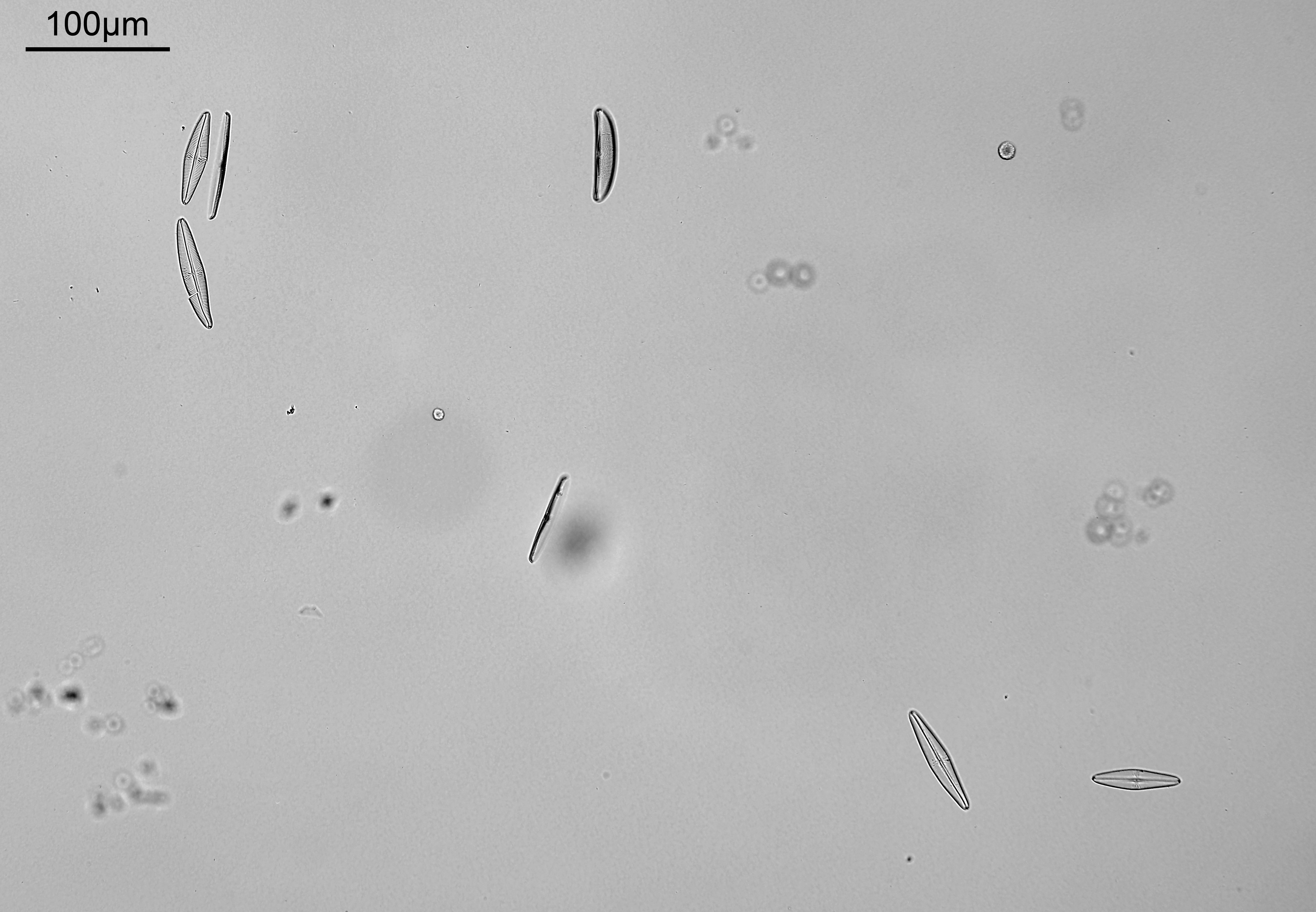
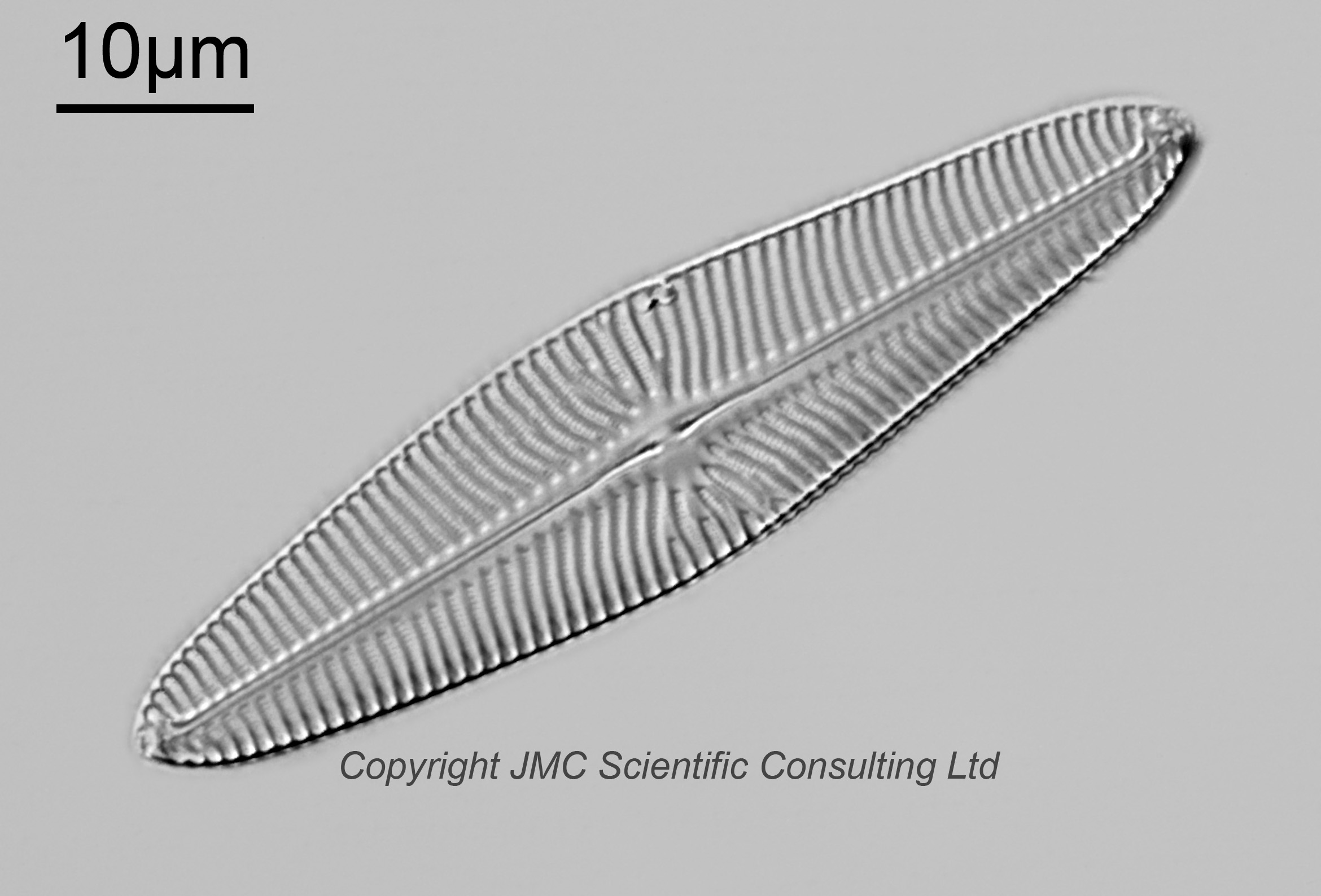
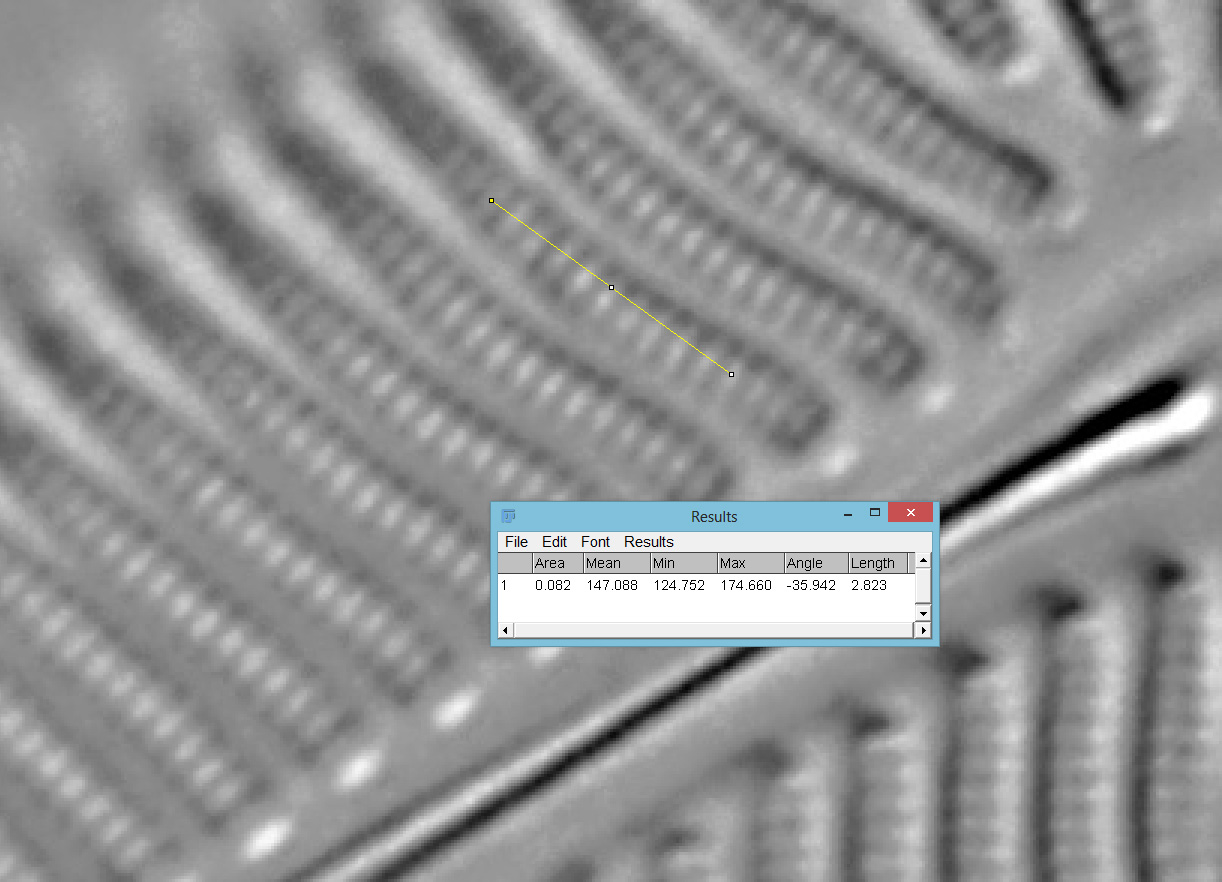
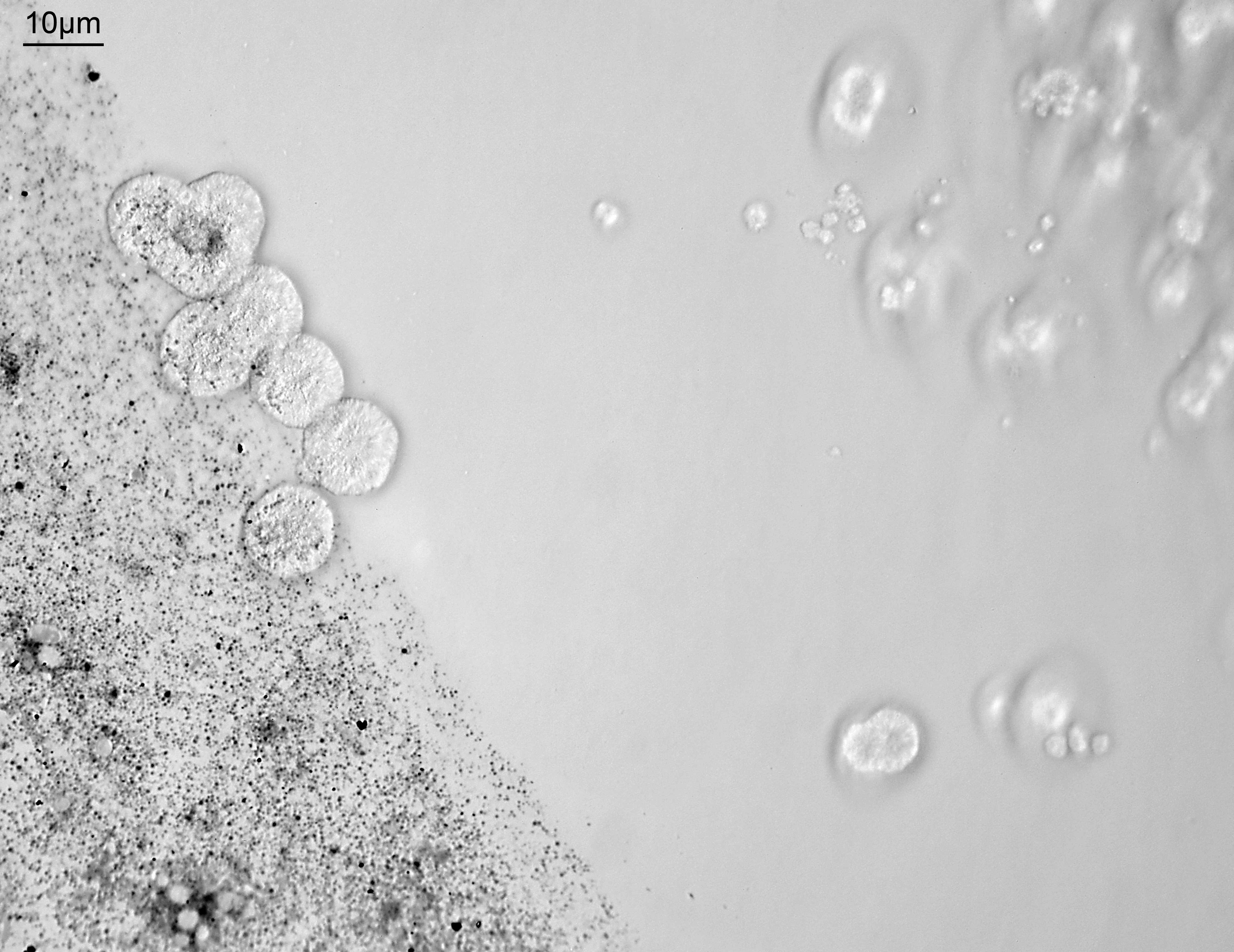
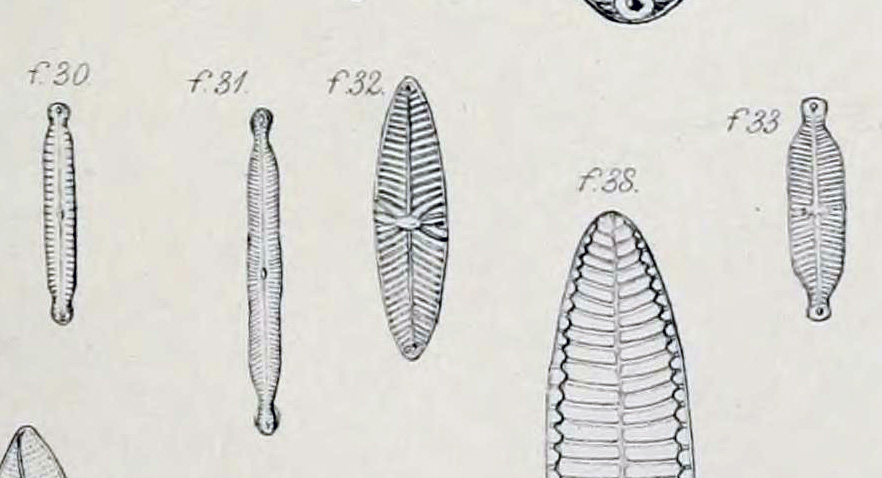
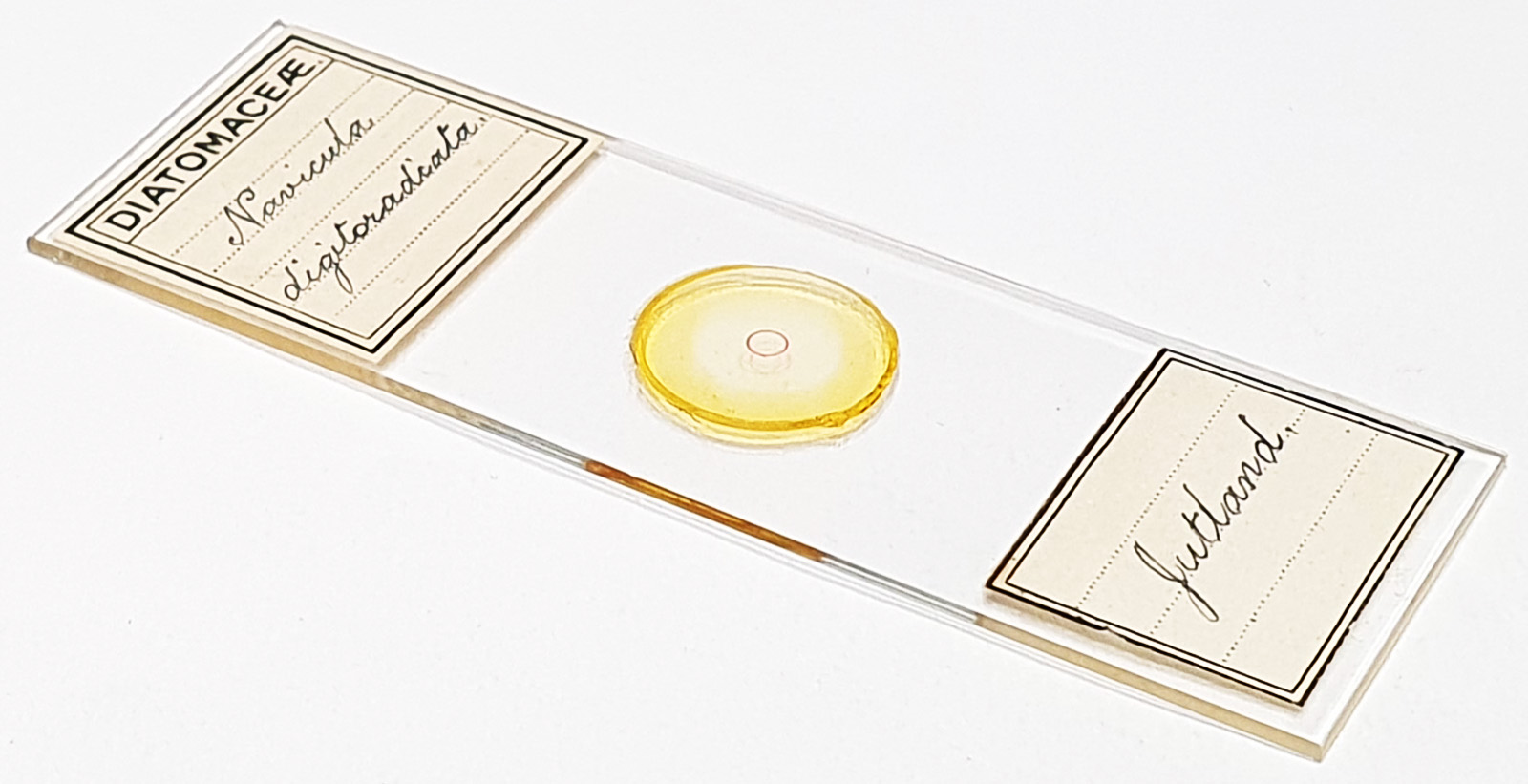
A slide with examples of Navicula digitoradiata (along with what looks to be an Amphora sp. which has snuck in there) from Jutland. No makers name but the style and handwriting looks like Frederick Marshall. Olympus BHB microscope using 450nm LED light. 63x Leitz Pl Apo 1.4 objective, oil immersion. Olympus Aplanat Achromat condenser, oil immersion, oblique lighting. 2.5x Nikon CF PL photoeyepiece. Monochrome converted Nikon d850 camera. 27 images stacked in Zerene (Pmax). There are some unusual circular features throughout the slide – crystallization of the mountant maybe, or mold spores? Not sure. This is quite a small diatom, but oblique lighting has brought out the areolae. Measuring these in ImageJ they have a spacing of 282nm, so even given the relatively low contrast of the image, it is amazing to see such small features.
Some comments on the name. The slide has it as Navicula digitoradiata. This is written about in Pritchard, A. (1861). A history of infusoria, including the Desmidiaceae and Diatomaceae, British and foreign. Fourth edition enlarged and revised by J. T. Arlidge, M.B., B.A. Lond.; W. Archer, Esq.; J. Ralfs, M.R.C.S.L.; W. C. Williamson, Esq., F.R.S., and the author. pp. [1]-xii, [1]-968, 40 pls [I-XV]. London: Whittaker and Co.. It is on page 904 as Navicula digito-radiata. It is also known as Pinnularia digitoradiata (and digito-radiata), and that is in W.Greg., Quart. J. Microscop. Sci., n. ser., 4: 9, pl. 1, fig. 32 (1856), where there is a nice image of it on Plate 1, Figure 32 (shown above).
Overall an unassuming little slide, but with some nice small details present.